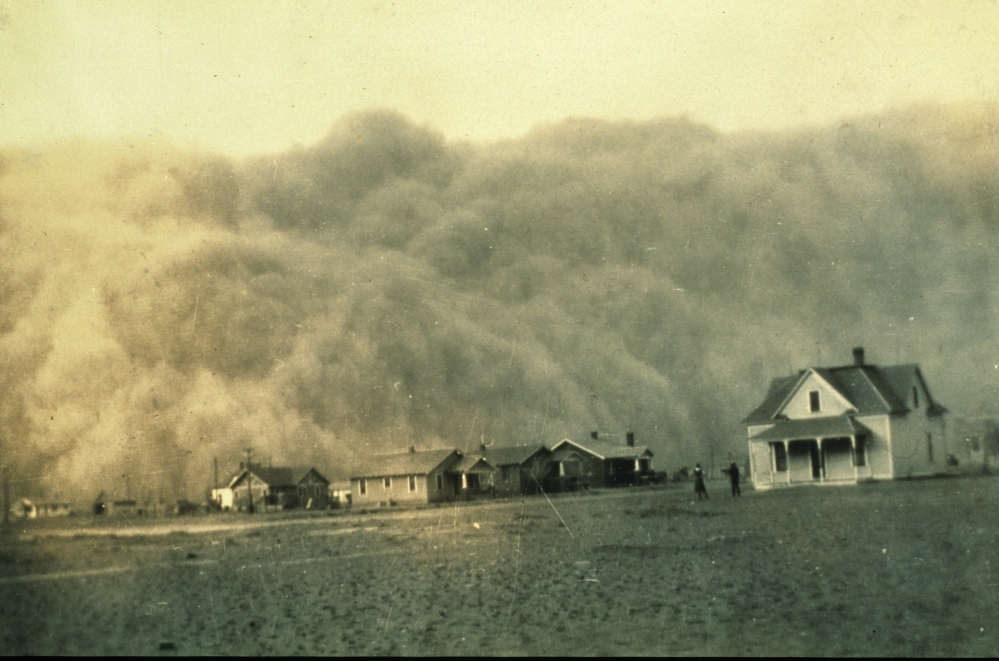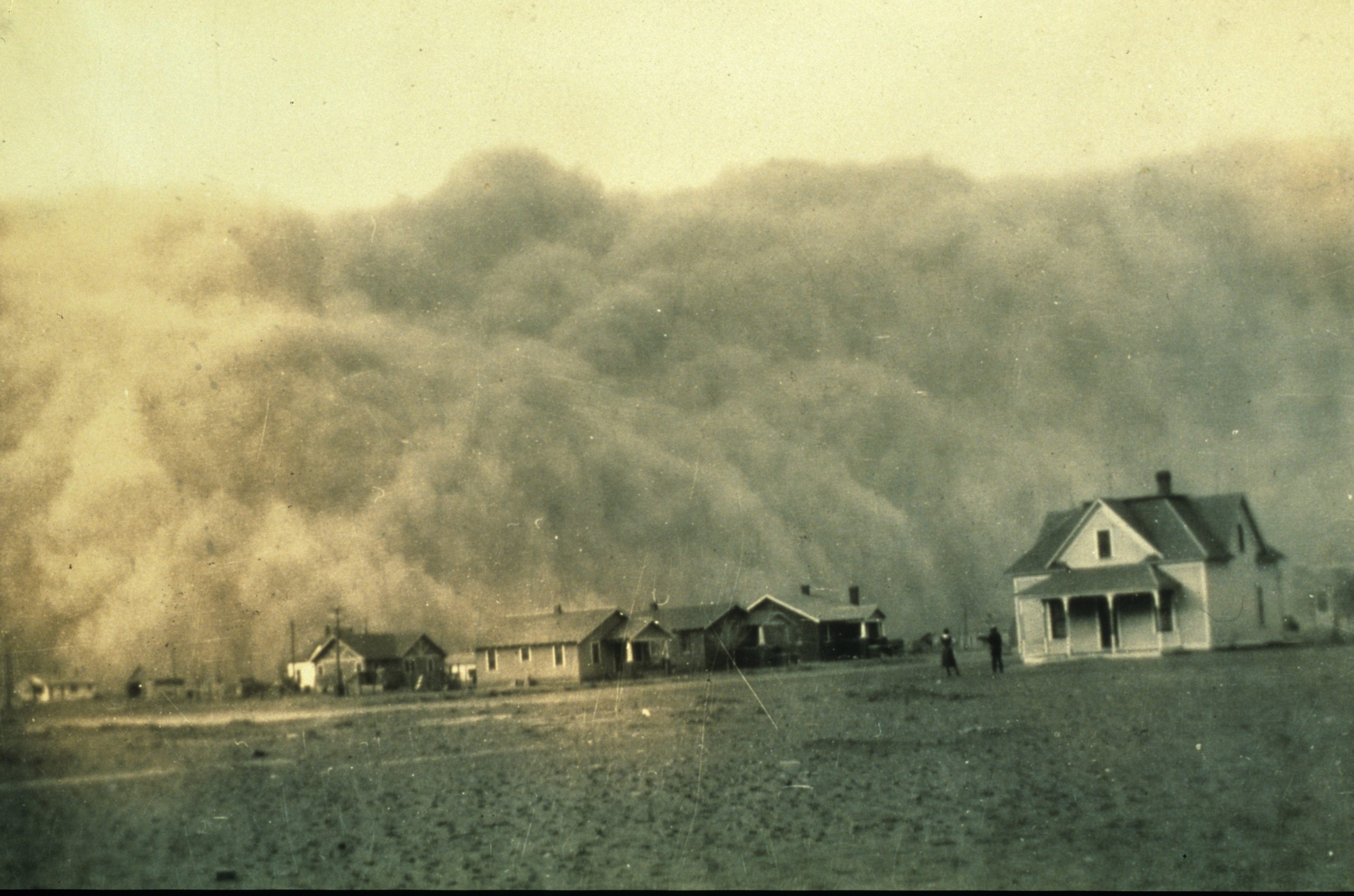By Linda Joy, NOAA Communications and External Affairs
In April 1935, George Marsh, an unassuming engineer employed by the U.S. Coast and Geodetic Survey, took a photo in the course of his work during a Texas surveying mission. Not having Facebook or other social media tools at hand, he put the photo in an album and stored it away. He could not have known that many decades later, thanks to the NOAA Library and the Internet, his photo would eventually reach millions of people around the globe.
The now famous photo captured boiling dust clouds about to swallow a homestead during the Dust Bowl’s infamous Black Sunday storm.

Upon Marsh’s death in 1955, relatives gave his album to the Coast and Geodetic Survey, which in 1970 became part of NOAA. There it remained in a file cabinet until 1994 when slides of the original photo were created. Three years later, the slides were digitized. Then the inevitable happened. The NOAA Library made the image freely available over the Internet through its online NOAA Photo Library where publishers, news outlets, historians, educators, students and many others discovered it.
A recent NOAA Library analysis shows that the photo has been published in works in 25 languages, 39 countries, and on more than 1,000 websites. It also blasted into space on a communications satellite on Nov. 12, 2012, along with 99 other photos selected by artist Trevor Paglen’s The Last Pictures project. Paglen intends the images, etched on a disc, to serve as a cultural archive and to last well longer than human civilization.
Marsh’s photo was one of three that Paglen selected from the NOAA Photo Library. The space project prompted NOAA librarian Albert “Skip” Theberge to do an analysis of the Photo Library’s reach.
“I selected Marsh’s photograph for tracking as its use emanated from only one possible root – that being its digitization and posting to the Internet in the very first version of the NOAA Photo Library in late 1997,” Theberge explains. It had never been published in either a scientific journal or any book, popular magazine, or other media prior to its posting on the Internet via the NOAA Photo Library.
“Fortunately, Marsh was a keen observer of the world about him and on Black Sunday, April 14, 1935, he took a photo of a dust storm approaching Stratford, Texas. A white house is seen on the right of the image and two people stand in the middle distance, seemingly mesmerized by the boiling mass of dust and sand approaching their little town. I felt that the photo had historical significance and merited further preservation.” Theberge says. The image is actually labeled April 18, but Theberge believes Marsh erred in labeling the date.
Theberge devoted about 80 hours of detective work last November to finding how many times and where the image has been used. Among his findings:
- USA Today has used the image four times.
- It has been published in 24 books.
- Among the more than 1,000 websites that have posted the image are 214 blogs, 134 news sites, 129 photo sites, 91 educational sites, 67 political sites, 41 government sites, 20 sites on religion, philosophy and self-help, and 17 music sites.
- The photo has been shared on social media, including 51 posts on Pinterest.
“Although you would predict that the photo would be used primarily for either climate discussions or Dust Bowl history sites, what I discovered was an astounding variety of uses of the image,” Theberge says. Since he concluded his analysis last year, he has found the Marsh image posted on even more sites. “It will never be possible to state definitively how many times it has been used or how many people have seen it.”
Besides the Marsh dust bowl photo, the NOAA Photo Library and its sister site on the social media photo sharing website Flickr today have nearly 60,000 images online. These resources and the power of imagery have helped spread NOAA’s work, discoveries and heritage worldwide.


Good post. Thanks.
What an awesome picture, to be able to see the history in it.
Thanks